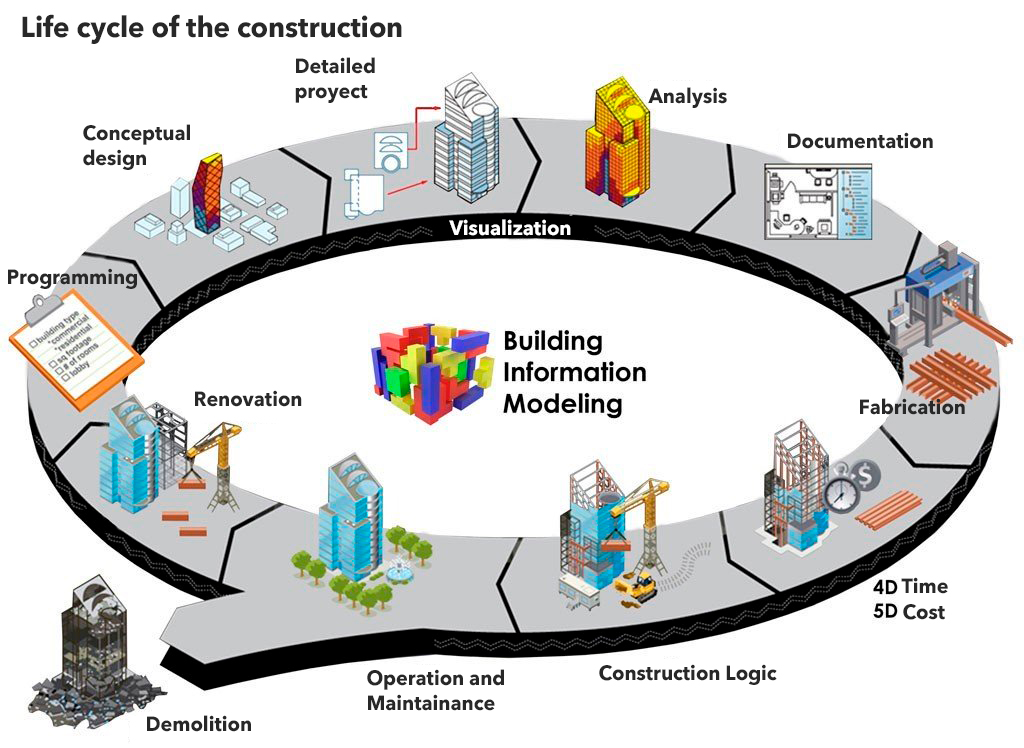BIM
What BIM means
BIM (Building Information Modeling) is the technology based on the creation of a central model that contains information associated with the component elements.
The importance of BIM
In the conventional methodology, the development of a project is based on 2D plans. In large projects and in the advanced phases of the project, many teams work in parallel and, in many cases, the information chain is lost. Finally, inconsistencies that typically affect delivery dates are discovered on the site.
In the BIM methodology, the development of the project is based on a virtual and unique model. Different teams build the building virtually so that coordination issues are resolved before the construction phase.
BIM Flow of information
One of the many definitions we can offer about BIM is that it is a methodology in which the different agents involved in the project construction process work together in a digitalized environment, where an efficient exchange of information (data and geometry) takes place and where the collaboration is in order to achieve a more efficient process in which fewer mistakes are made, thus achieving a construction more adapted to the initial planning.
This methodology is also being pursued to produce more efficient buildings that produce less waste and should be easier to use. Through this vision the key is not the developed, managed and shared information in which all of the involved participate.

CDE “Common data enviroment”
CDE is the only source of information for a given project, which is used for the collection, management and dissemination of all project documents, approved and relevant to the multidisciplinary teams participating in it. A CDE can use a project server, extranet, document extraction system, or any appropriate toolkit.